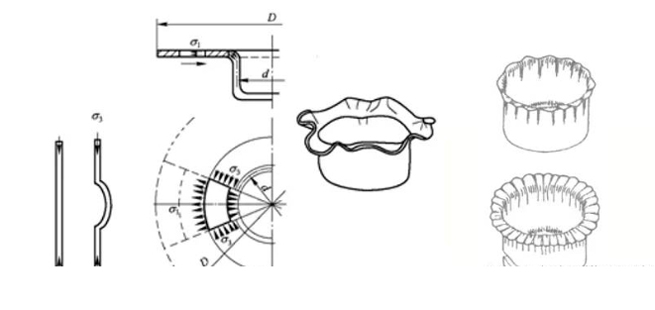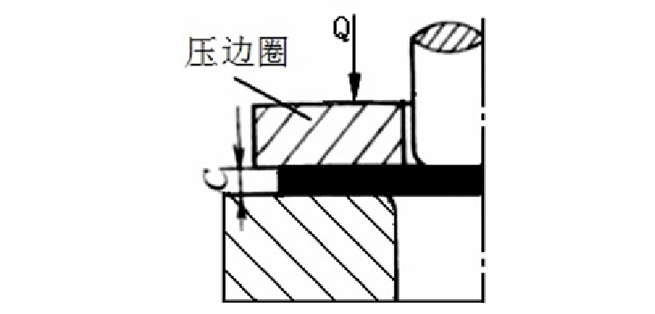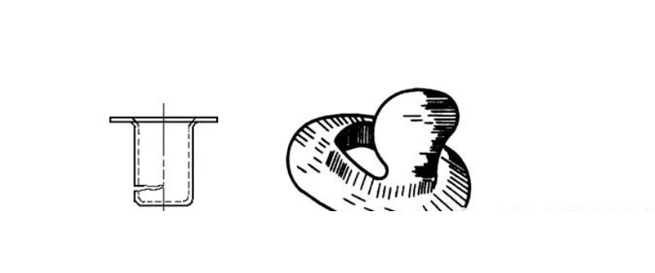
The main quality issues during the deep drawing process:
Wrinkling in the flange deformation zone
Cracking of dangerous sections
1) The concept and causes of wrinkling
Wrinkling refers to the phenomenon of uneven wrinkles formed along the tangential direction in the flange deformation zone during deep drawing deformation.

2) Factors affecting wrinkling
Mechanical properties of materials
The relative thickness of the flange material
Deformation degree
The geometric shape of the working part of the concave mold: the conical concave mold is not prone to wrinkling

In general, the wider the flange width and the thinner the thickness, the smaller the material's elastic modulus and hardening modulus, and the weaker its ability to resist instability, making it more prone to instability and wrinkling.
Whether wrinkling occurs can be determined by Table 5-1 or formulas 5-3 and 5-4 based on the relative thickness of the sheet metal
3) Measures to prevent wrinkles
The most effective measure to prevent deep drawing wrinkling in actual production is to use edge holding rings and apply appropriate edge holding force Q

(1) Wrinkle pattern:
Practice has proven that wrinkling is most likely to occur during the first deep drawing of straight walled cylindrical parts: the early stage of deep drawing
(2) Anti wrinkle measures: Apply appropriate edge pressing force using edge pressing rings
(3) Wrinkle location: The main deformation area of deep drawing (flange deformation area)
1) The concept and causes of tearing
When the tensile stress on the cylinder wall exceeds the tensile strength of the cylinder wall material, the deep drawn part will rupture at the "dangerous section" where the bottom fillet is tangent to the cylinder wall.
On the one hand, it is the tensile stress in the transmission zone of the cylinder wall. On the other hand, it is the tensile strength of the force transmission zone on the cylinder wall.

2) Factors affecting tearing
(1) The influence of mechanical properties of sheet metal
(2) The influence of deep drawing coefficient m
(3) The influence of concave die fillet radius
(4) The impact of friction
(5) The influence of edge holding force
3) Measures to prevent tearing
Select materials with high hardening index and low yield strength ratio for deep drawing;
Appropriately increase the fillet radius of the drawing convex and concave molds;
Increase the number of deep drawing operations;
Improve lubrication.
Practice has proven that the most prone time for cracking in the first deep drawing of straight walled cylindrical parts is in the early stages of the drawing.
